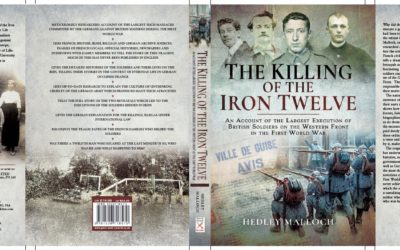News
The Killing of the Iron Twelve
The Killing of the Iron Twelve by Hedley Malloch Written by Hedley Malloch, this meticulously researched account, grippingly and vividly recounts the events and fate of the soldiers on the run and the French civilians who helped them. The story is one of dramatic...
Torn Apart
Torn Apart, a novel by David Arrowsmith This novel, based on the Iron12 story, is available from Amazon in paperback and Kindle Edition. The central character, Charlie, depicts Fred Innocent, one of the soldiers executed as a spy by the Germans on February 25th,...

Following on from our last post, the plaque on M. Chaldre’s gravestone has been regilded and reinstated at a slight angle to aid rainwater runoff. His grave in Guise cemetery is just yards from the graves of the soldiers he so gallantly helped in Iron in 1915. His bravery cost him his life. This major restoration work will be one of our last tasks before custody of the monuments is transferred to local organisations. More on this shortly. If you don’t know, arguably the most intriguing story of WW1, I highly recommend reading it here https://iron12.org/the-story-part-1/





